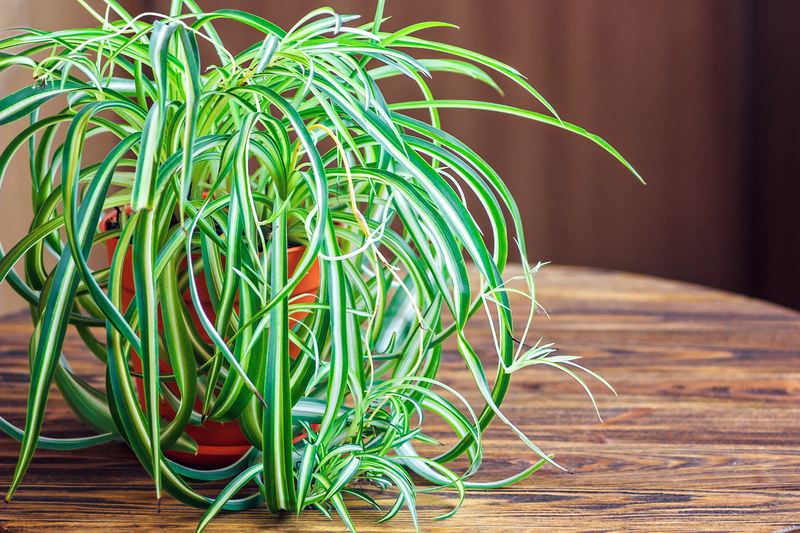Preserve Your Lawn's Beauty Despite Summer Drought Stress
Summertime drought can spell trouble for the lush, green lawn you've worked so hard to cultivate. High temperatures and minimal rainfall can leave your grass brown, patchy, and looking more like a desert than the healthy oasis you desire. Fortunately, with the right knowledge and practices, you can maintain your lawn's beauty during summer drought stress. In this comprehensive guide, you'll discover expert tips and actionable advice to keep your lawn thriving, even under the harshest summer conditions.

Understanding Summer Drought Stress on Lawns
Before diving into specific strategies, it's important to understand why lawns suffer during drought. Drought stress on lawns occurs when water loss from evaporation and transpiration exceeds the moisture your soil can provide. This condition is exacerbated by:
- High temperatures
- Extended periods without rain
- Poor soil quality or compaction
- Incorrect mowing or watering habits
These factors contribute to grass turning brown, weak root systems, increased weed growth, and even permanent damage if not addressed promptly.
Signs Your Lawn Is Suffering from Summer Drought Stress
- Grass blades turn bluish-gray rather than green
- Footprints remain visible due to lost turgor pressure
- Thinning patches or bare spots appear
- Growth slows or stops
If you notice any of these symptoms, it's time to implement strategies to preserve your lawn's beauty during drought stress.
Best Practices to Maintain Lawn Beauty During Drought
1. Choose the Right Grass Types for Drought Resistance
Not all grasses are created equal when it comes to drought resilience. Consider overseeding or planting varieties known to withstand summer drought stress:
- Bermudagrass: Highly drought-tolerant and thrives in hot climates.
- Zoysiagrass: Manages well with less water and spreads quickly.
- Tall Fescue: Deep roots make it better able to access groundwater.
- Buffalograss: Excellent for low-water settings and minimal maintenance.
Tip: If your area frequently experiences drought, consult your local extension office or turf expert for the best grass recommendations.
2. Smart and Efficient Watering Techniques
Proper watering is critical for keeping your lawn vibrant in drought conditions. Here's how to water effectively:
- Water Early: Water your lawn before 10 a.m., ideally between 4 and 9 a.m., to reduce evaporation.
- Deep, Infrequent Watering: Apply 1-1.5 inches of water per week, but do this in one or two deep sessions rather than daily shallow watering. This encourages deeper rooting and improves drought resistance.
- Use Soaker Hoses or Drip Irrigation: These minimize waste and deliver water directly to the roots.
Remember, overwatering can be as detrimental as under-watering, promoting disease and shallow roots.
3. Mow Correctly to Reduce Drought Impact
Your mowing habits play a significant role in how your lawn fares during a dry spell:
- Raise the Mower Height: Tall grass (3-4 inches) shades the soil, reduces water loss, and develops deeper roots.
- Keep Blades Sharp: Dull blades tear grass, making it more susceptible to stress and disease.
- Don't Mow Too Often: Let grass grow longer between cuts during dry periods to minimize stress.
- Leave Clippings: By leaving grass clippings on the lawn (grasscycling), you help retain soil moisture and add organic matter.
Pro tip: Never remove more than one-third of the grass height in a single mowing session.
4. Mulching and Soil Improvement
Healthy soils lead to healthy lawns. Here's how to enhance your turf's drought resilience:
- Mulch Grass Clippings: Helps retain moisture, regulate soil temperature, and add nutrients back to the soil.
- Aerate Your Lawn: Aeration relieves compaction, enhances water uptake, and encourages deeper rooting.
- Topdress with Compost: Compost added to the soil improves water-retention abilities and supplies key nutrients.
Incorporating organic matter is one of the most effective and long-lasting ways to boost a lawn's drought tolerance.
5. Fertilize Wisely During Summer
Fertilizing during a drought requires careful attention. Over-fertilizing can burn grass, while under-fertilizing leads to nutrient deficiencies. For best results:
- Avoid applying nitrogen-heavy fertilizers during peak heat or drought periods
- Use slow-release fertilizers in early spring or fall when rainfall is more abundant
- Consider organic options like composted manure or mulched clippings for gentle, sustained feeding
Key point: Only fertilize if your lawn has enough moisture; otherwise, wait until after the drought breaks.
6. Control Weeds and Pests
Drought-stressed lawns are more vulnerable to weed invasion and pest infestation. Take these steps to minimize problems:
- Spot-treat weeds with selective herbicides or hand-pulling to avoid damaging surrounding grass during drought
- Monitor your lawn for grubs, chinch bugs, and other pests that thrive in dry conditions
- Practice Integrated Pest Management (IPM) to keep pests in check without overusing chemicals
Maintaining a healthy, thick lawn year-round is the best defense against unwanted invaders.
Long-Term Strategies for Summer Drought Lawn Survival
1. Plan for Future Droughts with Smart Lawn Design
Want to preserve your lawn's beauty through every summer? Consider updating your landscape to be more drought-resilient:
- Reduce Lawn Size: Convert difficult-to-irrigate areas to mulched beds or native plant gardens that use less water
- Install Drought-Smart Borders: Mulched strips along sidewalks and driveways reduce hot, dry conditions at lawn edges
- Choose Native Grasses: They're naturally adapted to your region's rainfall and temperature extremes
2. Invest in Efficient Irrigation Systems
Smart irrigation is a game-changer for lawns exposed to summer drought stress:
- Smart Controllers: Weather-based systems adjust watering schedules based on local conditions
- In-Ground Drip Systems: Deliver water at the root zone, reducing waste and ensuring better absorption
- Rain Barrels: Harvest and store rainwater to use during dry spells
3. Maintain Healthy Soil
Drought-resistant lawns start with healthy, well-structured soil. Beyond regular aeration and composting:
- Test Your Soil: Every 2-3 years, test pH and nutrient levels for balanced fertility and structure
- Amend as Needed: Correct imbalances with lime, gypsum, or organic matter as appropriate
- Encourage Microbial Life: Earthworms and microbes improve nutrient cycling and water retention

Frequently Asked Questions about Keeping Lawns Beautiful during Drought
Should I Keep My Lawn Green Through Drought or Let It Go Dormant?
Most cool-season grasses can survive summer by going dormant--turning brown to conserve water for roots. However, prolonged dormancy can weaken or kill the grass. If you choose to let your lawn go dormant, provide it with 1/2 inch of water every three weeks to keep roots alive. Once significant rainfall returns, resume normal care to restore its beauty quickly.
How Can I Tell If My Lawn Needs Water?
- Walk across your lawn--if footprints remain visible, it's time to water.
- Look for color changes from green to grayish-blue.
- If grass blades fold or wilt, moisture is lacking.
Can Lawn Brown Spots Recover After Drought?
Yes, most brown patches will green up once adequate moisture returns, provided the grass was not killed. Deep-rooted varieties recover better. Reseed persistently bare areas with drought-tolerant grass in the fall.
Is It Necessary to Fertilize Lawns During Summer Drought?
Not usually. Avoid fertilizing during extended periods of drought and high temperatures. Instead, focus on maintaining soil health and wait for cooler, wetter weather.
Conclusion: Achieving a Beautiful, Resilient Lawn Despite Summer Drought
Preserving your lawn's beauty despite summer drought stress is not just possible, it's attainable with proactive management, smart design, and proper care. From choosing drought-tolerant grass varieties and smart watering, to maintaining healthy soil and effective mowing, you can keep your lawn green, lush, and beautiful all summer long.
- Prioritize proper watering and mowing techniques
- Mulch, aerate, and topdress to improve soil and moisture retention
- Adapt your landscape with drought-resilient lawn design and efficient irrigation
- Monitor for weeds and pests to prevent additional stress
By following these proven strategies, you'll protect your lawn's vitality and curb appeal, preserving its lush appearance even during the harshest droughts. For the best results, start implementing drought-resilient lawn care techniques before the heat sets in, and your lawn will reward you with steadfast beauty for years to come.